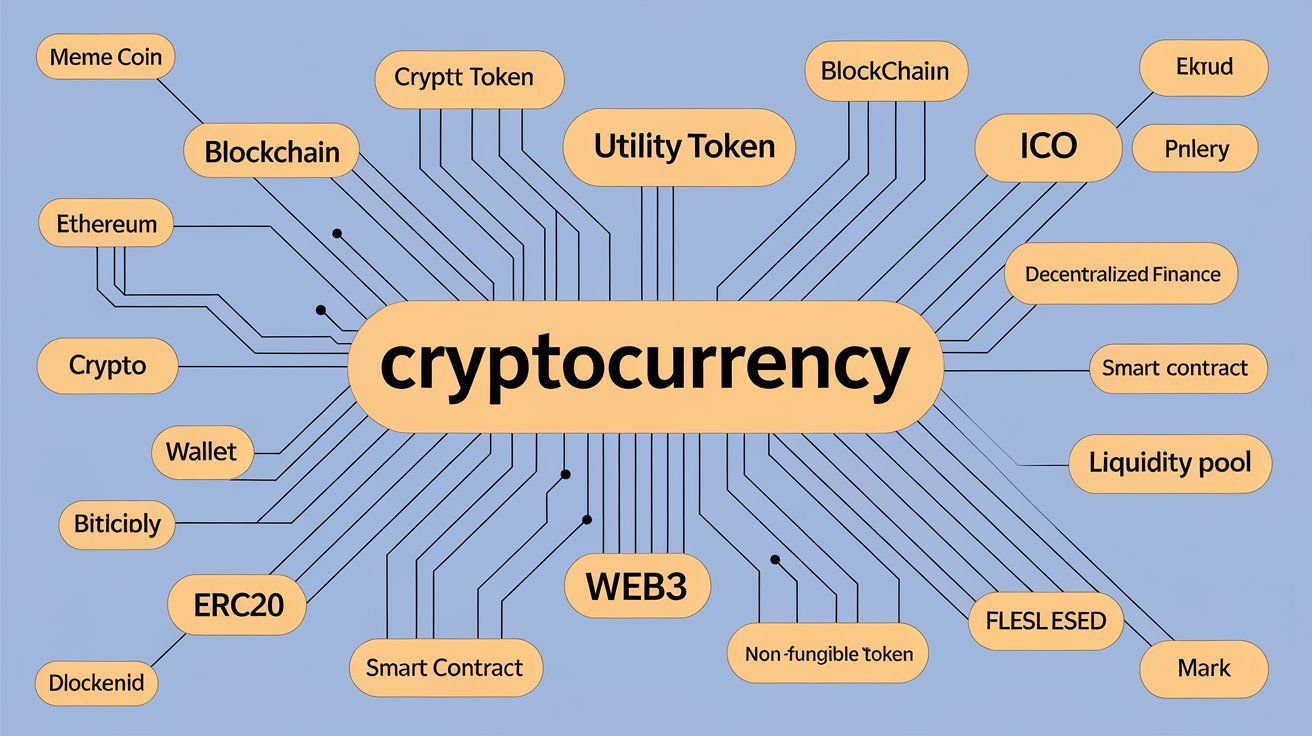Many potential investors miss out on amazing crypto investment opportunities because they can’t get the hang of all the crypto terms and jargon used by crypto users. At first glance, they can be quite intimidating, though once you get the ball rolling, they start to make sense.
Crypto Terms to Help You Get Started
Altcoin is short for “Alternative Coin.” In crypto slang, the term is used for any cryptocurrency other than Bitcoin.
Bitcoin is the first and the most popular cryptocurrency that started the recent crypto movement.
Bitcoin Cash is an altcoin that came to life after the hard fork of Bitcoin in August 2017. You can find the explanation of “fork” further down the article.
Block in crypto jargon is used to refer to the data structures that hold the necessary information for transactions done on the blockchain.
Blockchain is the underlying technology behind cryptocurrencies. It is made up of a series of blocks that hold the necessary information regarding crypto transactions and serve as a permanent ledger for crypto records.
Coin in crypto terminology is used to describe the units of currency on a given crypto network or blockchain. While in many cases, the coin has the same name as the network (e.g., Bitcoin), sometimes the name of the coin doesn’t resemble the name of the network at all. For example, Lumen is the native coin for the blockchain named Stellar.
Coinbase is not exactly a cryptocurrency term but rather the name of the largest cryptocurrency exchange in the United States.
Cold Wallet/Cold Storage is an electronic device, similar to a flash drive, used to keep crypto assets offline.
Cryptocurrency is a currency that is non-tangible and decentralized. Just like physical money, it has real value and can be used to buy and sell things.
Decentralization is one of the most important crypto terms to know and understand. When something is decentralized, it is built in a model that requires a majority vote for any significant changes to take place rather than a central authority to make decisions.
Decentralized Finance (DeFi) is an umbrella term that encapsulates all financial activity done without mediation from central authorities like governments or banks.
Decentralized Applications (DApps) is a cryptocurrency abbreviation for apps that don’t require intermediaries to carry out actions and operate autonomously.
Ethereum is one of the most popular decentralized blockchain networks used by many crypto users to develop applications. Its native coin is Ether, which is the second largest cryptocurrency by trade volume in the world.
Fork in the crypto vocabulary is used to describe a situation where due to changes in protocol, there are two potential paths the blockchain can take moving forward. When not all stakeholders are in agreement over which path to take, the blockchain diverges (forks) into two separate blockchains. This is known as a hard fork, and the separation of Bitcoin and Bitcoin Cash is the most noteworthy example. The crypto lingo also recognizes a soft fork, which is a change in the protocol used to add new features and functions without changing the rules.
Genesis Block is a term used to refer to the first block of Bitcoin ever mined.
HODL (Hold On to Dear Life) is one of the most popular crypto phrases used to describe a trading “strategy” in which crypto traders don’t trade their currency but rather hold on to it waiting for it to grow in value.
Halving is a term used to refer to a Bitcoin feature written in its code that reduces the number of new Bitcoins entering circulation by half when a certain number of blocks are mined.
Hash is cryptocurrency slang for complex mathematical functions that require large computing power to solve.
Hashrate is a unit of measurement that measures the number of calculations performed per second.
Hot Wallet is a digital wallet that doesn’t exist in the physical world, used to store crypto assets.
Initial Coin Offering (ICO) is a crypto abbreviation that refers to the initial funding that companies use to raise money when they want to launch a new product. It is the crypto equivalent of IPO (Initial Public Offering).
Market Capitalization is the term used to describe the total value of all the circulating coins from a given cryptocurrency.
Mining, in the simplest terms, is the process of creating new crypto coins. However, since this is a crypto dictionary for beginners, here’s some more information on it, following the above explanation of blocks and hashes. To validate the transaction data within a block, crypto users use the computing power of their computers to solve the complex mathematical functions known as hashes. Once the miner completes a block, they receive a reward in the form of Bitcoin.
Node in cryptocurrency terminology simply refers to a computer connected to a blockchain network.
Non-Fungible Tokens (NFTs) are crypto assets that are used as proof of ownership of unique and, in some instances, very valuable digital objects such as art, collectibles, etc.
Peer-to-Peer (P2P) is a type of network where all participants are equally privileged, without the intermediation of a central authoritative party. The term is not exclusive to the crypto glossary and is used in all types of networking.
Public Key is the term used to refer to the address of a crypto wallet. Just like a bank account number, it is used to send or receive crypto assets.
Private Key is the term used to refer to the passcode used to authorize crypto transactions.
Rig in cryptocurrency lingo is used to describe a very powerful arrangement of hardware specifically designed to mine crypto coins.
Satoshi Nakamoto is the only pseudonym under which the creator of Bitcoin is known.
Smart Contract is another one of the most important cryptocurrency terms to know and understand as a crypto beginner. All transactions on the blockchain are performed by smart contracts, which are self-executing contracts that only execute when their terms are met by both parties. The terms of smart contracts are hard-coded into the blockchain so they allow no room for foul play.
Stablecoin is a term from the cryptocurrency vocabulary used to describe coins that attach their value to a currency or commodity from the physical world. Their value increases and decreases parallelly to the value of the asset they are pegged to. The most notable example is Tether, which is attached to the USD.
Token is a term from the cryptocurrency glossary which refers to any unit of value on the blockchain, apart from coins.
Vitalik Buterin is the programmer that co-created the Ethereum blockchain.
Conclusion
That wasn’t so bad, now was it? Even though this glossary only covers about 30 of the most commonly used crypto terms, you should already feel more confident and not as clueless as before. With a little more effort, you can start contemplating tokenomics and enriching your portfolio with profitable crypto assets.









